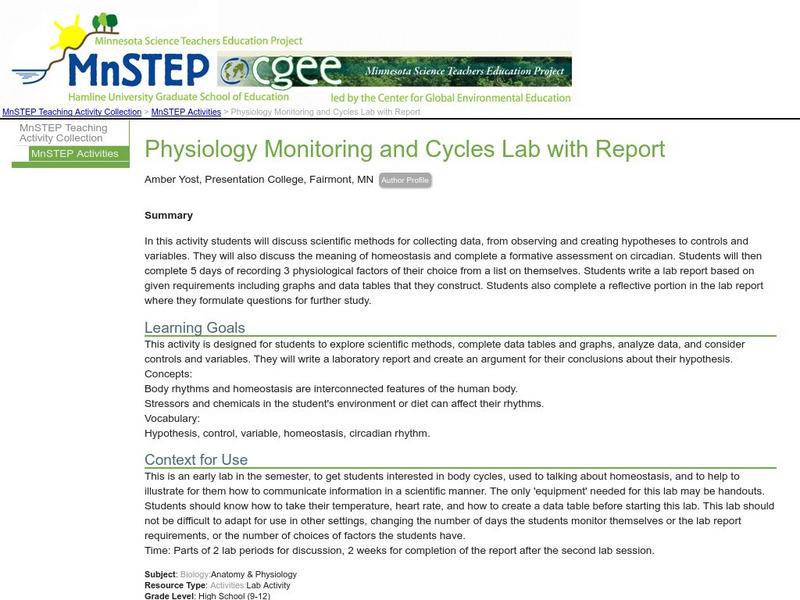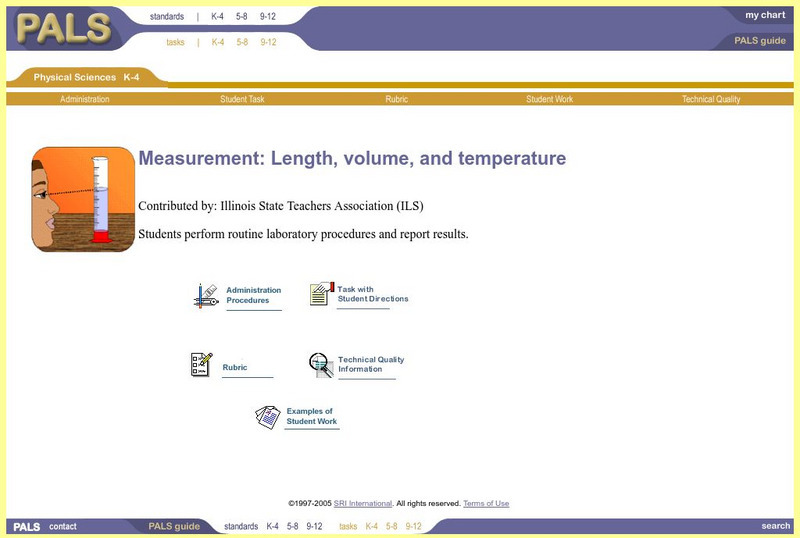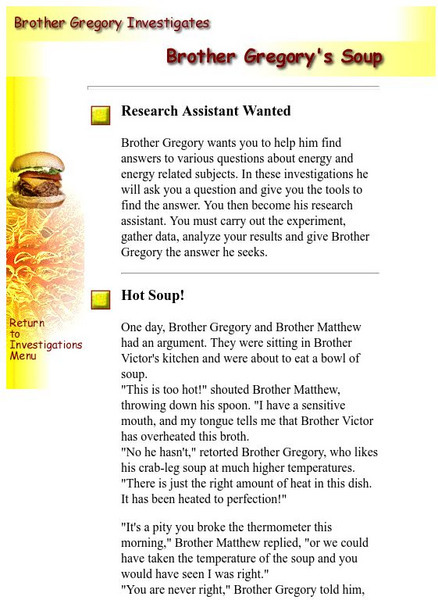Hi, what do you want to do?
Curated OER
Project Geode
Young scholars predict the appearance of a geode's internal structure based on its mass and density. They form a hypothesis based on the data they collect. They also identify common minerals found in Illinois.
Curated OER
Density of Liquids
Students explore the density of liquids. In this scientific inquiry lesson plan, students discover the density of water, corn syrup, and cooking oil through an experiment. In addition, students will draw and label pictures of the...
Curated OER
Texas Estuary Project
Students take a field trip to a local estuary and analyze water samples. They analyze and graph the data results, write an essay, and create a food web of their field site.
Curated OER
Amphibians-Frog Dissection
Students compare the anatomy of a fish to an amphibian and that of an amphibian (frog) to a human. They complete a virtual frog dissection to gain some experience prior to the real dissection.
Curated OER
Chemical or Physical?
Fourth graders make observations of the reactions that happens between calcium carbonate and various liquids. During the experiment the students determine if there is a chemical change, a physical reaction, or no reaction when they mix...
Curated OER
Corrosion & Rust
Students examine how and when rust and corrosion occur. For this corrosion lesson students complete an experiment to see why metals rust.
Curated OER
What Effects Do Trees Have On The Environment?
Learners examine the interrelationship between trees, soil and people focusing on urban areas. They collect and analyze data about trees in their research area.
Curated OER
Our Food and Microorganisms
Students answer questions about how microorganisms can affect our food supply and how they can be controlled. The first set of inquiry activities are directed by the teacher. Subsequent activities are based on students generating their...
Curated OER
Elasticity of Gases
Students investigate gas laws and apply them in experimental conditions. Using an apparatus composed of a syringe and wooden blocks, they experimentally verify Boyle's and Charles' laws of gases.
Curated OER
Avogadro's Law
Students study Avogadro's law and what it means in science. In this gaseous instructional activity students complete an Avogadro's law experiment.
Curated OER
Graphing Your Motion-Day 1
Ninth graders explore the concepts of motion, velocity and acceleration through graphing their own movement using LoggerPro. They become more familiar with the computer technology. Students explore graphing in real time and graph on...
Curated OER
Mystery Boxes
Students make observations about Mystery Boxes that their teacher has made up and describes the motion of the object inside the box and hypothesizes it's shape based on their observations.
Curated OER
Pollen Tube Growth
High schoolers demonstrate the proper usage of the compound and dissecting microscopes. They identify the parts of a flower and the functions of the flower parts. Students describe the process of gamete formation and fertilization in a...
Curated OER
Weather Words
Third graders gather together as a class and share any facts or words about the science unit "Weather Elements". They listen to the story/poem, "Listen to the Rain" and recall any weather related words from the story.
Curated OER
Cloud Forecast
Students record weather observations and research online weather data. In this weather observations lesson, students study the cloud cover for several days and record their observations in a chart. Students identify the cloud types and...
Science Education Resource Center at Carleton College
Serc: Physiology Monitoring and Cycles Lab With Report
Using physiology monitoring, students will understand how to collect data using scientific methods in this activity. Students will also learn how to communicate the finding in a lab report. Physiology monitoring will include measuring...
Concord Consortium
Concord Consortium: Stem Resources: Relative Humidity Measurement
Using the wet bulb-dry bulb method, students will compare the temperature of a dry temperature sensor and a wet temperature sensor. By comparing the temperatures, students will be able to find the relative humidity. After completing the...
Other
National Physical Laboratory: The History of Length Measurement
This resource provides historic information on length measurement in the United Kingdom. Click on the topics on the left toolbar of the article to find out more information.
Science Education Resource Center at Carleton College
Serc: Greenhouse Effect Lab
Students measure temperature changes inside soda bottles filled with CO2 and air as incandescent light is shined on them to model the Greenhouse Effect.
SRI International
Performance Assessment Links in Science: Measurement: Length,volume,temperature
This performance task tests students' ability to measure length, volume and temperature accurately in a lab setting.
City University of New York
Brooklyn College:heat and Temperature Interactive Lab
Use this online activity to explore how various substances respond to changes in temperature. Learn how to calibrate a thermometer.
Science Education Resource Center at Carleton College
Serc: Investigating Heat and Temperature
In this lab, students will be able to describe the difference between heat and temperature. Students will feel several objects at room temperature and predict their temperature based on feel. They will then measure the actual temperature...
Utah Education Network
Uen: Heat Sources Feeling Hot Hot Hot!
How does temperature vary in the sunshine and shade. Find out as you participate in this lab activity. The resource also has some online thermometers for you to read.




























